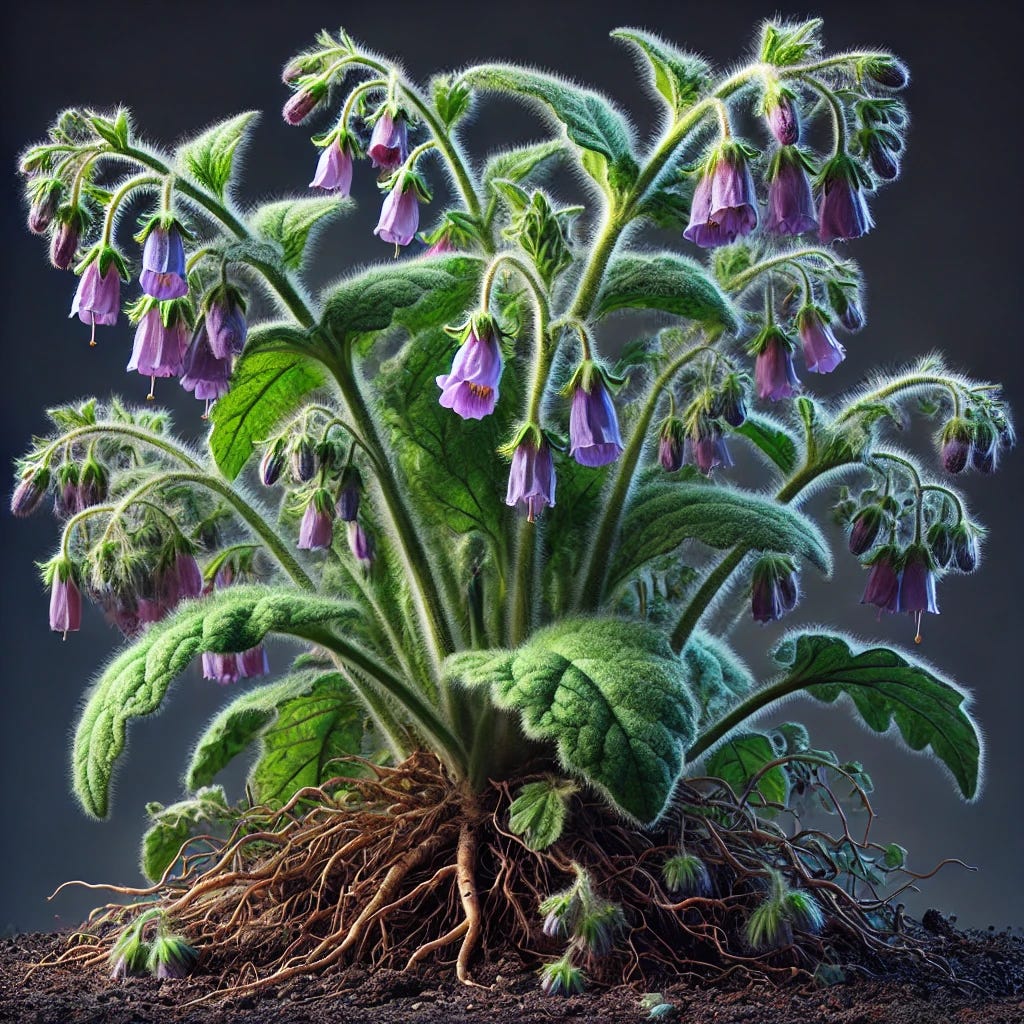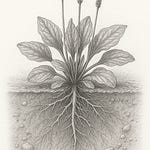Living Plant Wisdom Profile: Comfrey (Symphytum officinale)
Welcome to a plant whose very name means to unite.
In the quiet corners of gardens, along streambanks, and at the feet of fruit trees, Comfrey has stood for centuries as a guardian of healing, fertility, and resilience. Known by names like “knitbone,” “wonderwort,” and “slippery root,” this deep-rooted perennial has long been treasured by herbalists, farmers, and foragers alike—not just for its potent medicinal virtues, but for the way it nourishes the land as much as it restores the body.
This week in Weeds of Wisdom, we turn our attention to Comfrey—Symphytum officinale—a plant that weaves together the wisdom of regenerative soil care, traditional healing, and ecological stewardship. As you’ll discover, Comfrey isn’t merely a “useful” herb—it’s a living system, a teacher of reciprocity, and a symbol of nature’s patient power to regenerate.
Whether you grow it, harvest it, compost it, or simply sit beside it in gratitude, Comfrey invites us into a slower rhythm—one of deep roots, steady regeneration, and humble abundance. Let’s dive in and explore the many layers of this remarkable ally.
Overview & Botanical Profile
Plant: Symphytum officinale (scientific name for common comfrey). Symphytum means “to unite,” reflecting its historic use in binding bones and healing wounds.
Common Names: Comfrey, common comfrey, knitbone, boneset, bruise-wort, slippery root, Knitback, wonderwort, consound, and velvet plant (and others). The name “knitbone” (and Latin symphytum) alludes to its traditional use in mending broken bones.
Family: Boraginaceae (the borage or forget-me-not family).
Native Range: Temperate Europe and Western Asia. (Other species like Russian comfrey, S. × uplandicum [S. asperum × S. officinale], are hybrid cultivars originally from Eurasia.)
Current Global Distribution: Naturalized worldwide, especially in North America, Australia, and beyond. In North America it grows commonly along streams, ditches, and moist fields as an introduced species. (In British Columbia it was noted as present in 36 U.S. states.) Bocking 14 and other sterile cultivars spread primarily by root cuttings.
Physical Description: A robust, tufted perennial (often acting as a biannual). Stems 0.3–1.2 m tall (30–120 cm), hollow and ribbed, often with winged ridges. Leaves large (up to 60 cm), ovate, and rough-hairy (causing mild skin irritation). Flowers in drooping racemes of bell-shaped tubular blooms (cream, pink, purple, or violet-blue in some hybrids) from spring into summer. The taproot is thick and fleshy, reaching deep (~1.5–2 m). S. officinale flowers are typically cream to pale purple, whereas the Russian comfrey hybrid has darker violet-blue flowers. The plant spreads by deep rhizomes and seed (though fertile seed set is limited).











